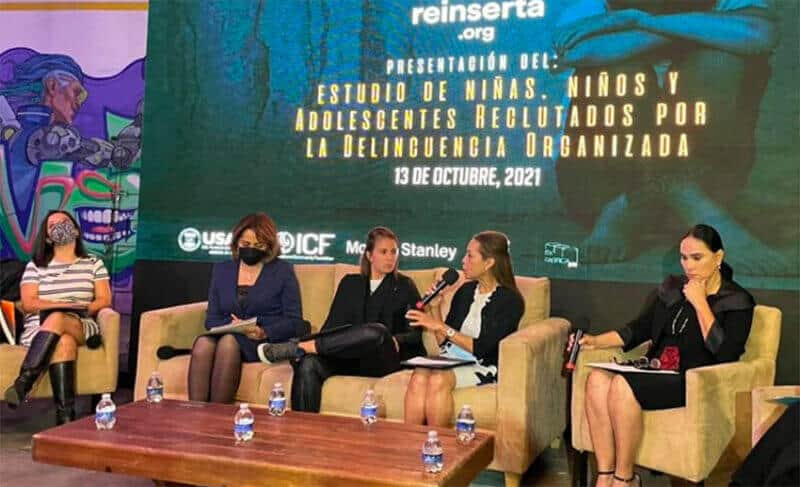Eduardo was a cartel lookout at 13, selling drugs at 15 and trained to become a hitman a short time later. Unfortunately, his story is far from unique: approximately 30,000 minors work for organized crime gangs, according to the Network for Children’s Rights in Mexico (REDIM).
The testimonies of 67 of them are compiled in a new report by Reinserta, a civil society organization that helps ex-prisoners reintegrate into society.
Presented by the organization on Wednesday, Boys, girls and adolescents recruited by organized crime details how criminal organizations recruit young people and outlines reasons why some youths are susceptible to recruitment.
Based on studies conducted in Coahuila, Nuevo León and Tamaulipas (the northern zone); México state and Guerrero (the central zone); and Oaxaca and Quintana Roo (the southern zone), the report states that adolescents are recruited either voluntarily or forcibly.
In the former case, a young person might be invited by a friend to join a gang to which he or she already belongs. Alternatively, youths might take it upon themselves to approach a criminal organization and ask to join its ranks.

In the latter case, teenagers are forced into a life of crime. Reinserta said voluntary recruitment is more common than forced recruitment in all three zones it studied.
The organization’s study identified four factors that can make minors more susceptible to recruitment: their family and psychological situation, their level of education, their socio-economic situation and their cultural background.
Young people whose family life is unstable, for example, or who have been abandoned or neglected by their family are more likely to join a criminal gang. Minors disinterested in their studies or who have already left school are also more likely to accept an offer to become a member of a criminal organization.
Boys, girls and adolescents are frequently recruited in urban and rural communities where violence is so common it is normalized, the report said. Cartels in the northern zone pay their underage members up to 35,000 pesos (US $1,700) a month, making a life of crime particularly attractive to young people who may lack life’s most basic necessities.
In the case of Eduardo (a pseudonym used by Reinserta to protect his identity), members of the Northeast Cartel recruited him at the age of 13 to work as a halcón (hawk), as a lookout is colloquially known. Two years later he was selling drugs on the streets and was in charge of other lookouts as the cartel’s chief hawk in the area he worked. Two months after becoming the jefe de halcones, Eduardo sought another promotion to become a sicario, or cartel hitman, Reinserta said.
Known as the Tropa del Infierno (Hell’s Army), the cartel unit to which he belonged provided weapons and combat training to young recruits – a heady experience for budding capos not long out of primary school.
Eduardo’s cartel experience came to an end after he was arrested on drug trafficking charges and sentenced to two years in a juvenile detention center in Coahuila. The youth, who spoke to Reinserta after serving nine months, said he wants to start a new life when he is released but is fearful of what might happen to him and his family if he doesn’t rejoin the Northeast Cartel.
“… I’m afraid that the cartel will look for me and if they find me I don’t know what I’ll do. … If they find you you can’t tell them, ‘I don’t want to do it anymore,’ you have to join because [if you don’t] they’ll beat the shit out of you, at the very least. It’s more likely they’ll put a bullet in your head,” Eduardo said.
Presenting the report, Reinserta co-founder Saskia Niño de Rivera cited REDIM data that showed that 20,000 minors have been murdered and 7,000 have disappeared over the past 20 years. Many of those killed likely had links to or were members of criminal gangs.
President López Obrador asserts that his government’s social programs, especially the “Youths Building the Future” apprenticeship scheme, help steer young people away from a life of crime, but Reinserta believes there is a lack of public policies to combat organized crime’s recruitment of boys, girls and teenagers. The consequences of the policy vacuum, the organization said, include the abduction and even murder of minors.
Those who are arrested before they meet one of those fates face the possibility of being tortured while detained, Reinserta said, noting that the practice was detected in juvenile detention centers in all three zones where it conducted its study. Consequently, it is not just criminal groups that violate minor’s human rights but also the authorities, the organization said.
